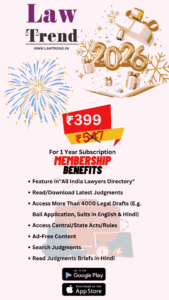As the tenure of Chief Justice of India D.Y. Chandrachud approaches its conclusion on November 10, 2024, the focus shifts to the succession line of the Supreme Court’s chief justices. Justice Chandrachud, who assumed office on November 9, 2022, will have completed two years as the head of India’s judiciary, marking a period of significant judicial decisions and administrative reforms.
The seniority list of Supreme Court judges reveals a notable trend for the upcoming years; among the successors, only Justice J.B. Pardiwala is set to serve more than two years as the Chief Justice. This brings to light the challenging dynamic of relatively shorter tenures for most future Chief Justices, which raises questions about the continuity and long-term policy implementations in the judiciary.
The Role and Responsibilities of the Chief Justice of India
The Chief Justice of India (CJI) not only presides over the Supreme Court but also holds the critical role of ‘Master of the Roster.’ This authority allows the CJI to constitute benches of two or more judges and assign cases. Moreover, the CJI heads the Supreme Court Collegium, responsible for recommending appointments to the Supreme Court and all High Courts, thus playing a pivotal role in shaping the judiciary.
The Collegium System and Judicial Appointments
Judicial appointments in India are made through the Collegium System, which includes the CJI and the four next senior judges of the Supreme Court. This system, which has been in place since October 1998 following the rejection of the National Judicial Appointments Commission (NJAC) by the Supreme Court as unconstitutional in 2015, aims to ensure independence and transparency in the appointment process.
Who’s Next After Chief Justice Chandrachud?
Justice Sanjiv Khanna is next in line based on seniority and is slated to become the 51st Chief Justice of India on November 11, 2024. However, his term will be notably brief, spanning just six months until his retirement on May 13, 2025. During his tenure at the Supreme Court since January 2019, Justice Khanna has been part of 358 benches and authored 90 judgments, contributing significantly to the legal landscape.
The Road Ahead: 2030 and Beyond
Following Justice Khanna, Justice B.R. Gavai will assume the role of CJI on May 14, 2025, with a tenure even shorter than his predecessor, ending on November 23, 2025. The year 2025 will thus see two chief justices, reflecting the rapid turnover at the judiciary’s highest echelon.
Also Read
Justice Surya Kant will take over on November 24, 2025, for a 14-month period. After him, Justice Vikram Nath is expected to serve from February 7, 2027, to September 23, 2027. The subsequent justices, including Justice B.V. Nagarathna, who will have a notably brief tenure of 36 days, Justice P.S. Narasimha, and Justice J.B. Pardiwala, will follow.




